Trivia Browser

▲
1
▼
Several additional characters were planned to appear in the game, but were scrapped in order to keep the game's plot easier to understand. This includes the presence of a "Space Broadcasting Censorship Bureau", who would interrupt broadcasts that were deemed unsuitable (and whom Pine was originally going to be a member of alongside her backups Sexy 1 and 2, taking issue with Ulala's exposing outfit), a narcissistic reporter from Channel 777 named "Gold Kinpicano", and a different main antagonist tentatively referred to as the "Dark Dancing Demon Lord", whose goal was to invade the entire universe with dance.

▲
2
▼
 There is an unused title screen in the Metal Slug bootleg game Terrifying 9/11 that suggests it was originally going to be released as a straightforward bootleg version of Metal Slug instead of a bad-taste cash-in on the September 11th attacks.
There is an unused title screen in the Metal Slug bootleg game Terrifying 9/11 that suggests it was originally going to be released as a straightforward bootleg version of Metal Slug instead of a bad-taste cash-in on the September 11th attacks.
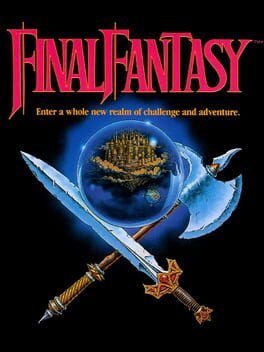
subdirectory_arrow_right Final Fantasy I & II: Dawn of Souls (Game)
▲
1
▼
Cid, a recurring character in the series who is usually a mechanic with some relation to airships, first appeared in Final Fantasy II and did not appear in the first Final Fantasy game. For the Final Fantasy I & II: Dawn of Souls re-release however, the original game's plot was retroactively changed to make "Cid of the Lufaine" the ancient creator of the airship that the protagonists used.
Final Fantasy I & II: Dawn of Souls - Cid backstory in Lufenia:
https://www.youtube.com/watch?v=IuJzaYSa4AU#t=147
Cid in the first two Final Fantasy games blog post:
http://home.eyesonff.com/content.php/2631-The-Iterations-of-Cid-Part-1
https://www.youtube.com/watch?v=IuJzaYSa4AU#t=147
Cid in the first two Final Fantasy games blog post:
http://home.eyesonff.com/content.php/2631-The-Iterations-of-Cid-Part-1
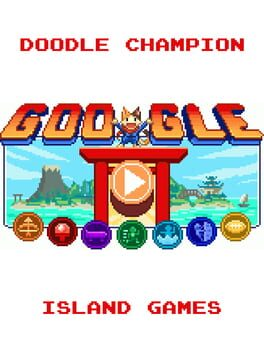
▲
1
▼
Google collaborated with Japanese animation studio Studio 4°C to make the game, because they wanted its artwork and character designs to be done by Japanese artists. The studio started by researching folk tales and designing characters to appeal to audiences of all ages. While the main game was inspired by 16-bit JRPGs, the seven sports minigames Google proposed were inspired by other game genres including shooting gallery, rhythm, and skateboarding games. To connect the champions to each sport, Studio 4°C settled on using historical and mythological figures who used items that complimented the sports. Google originally proposed a fox as the game's protagonist, but Studio 4°C rejected this due to the fox's reputation as a trickster archetype in Japanese culture, and they opted to design a cat named Lucky as a heroic figure instead. Lucky was made a female calico cat both to break away from depictions of women as "scary characters" in Japanese folklore, and because of the traditional prominence of calico cats in the country through items like Maneki-neko ("Beckoning cat") figurines.
Behind-the-scenes video:
https://www.youtube.com/watch?v=hy7tHQUR3TM
Washington Post article:
https://www.washingtonpost.com/video-games/2021/08/13/olympics-google-doodle-game/
https://www.youtube.com/watch?v=hy7tHQUR3TM
Washington Post article:
https://www.washingtonpost.com/video-games/2021/08/13/olympics-google-doodle-game/
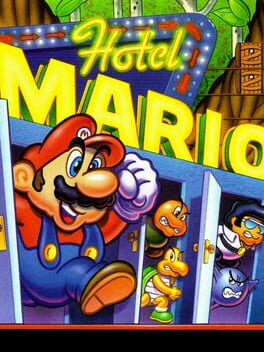
▲
1
▼
 In the prototype of Hotel Mario, walking Toads are used as Super Mushrooms and 1-Up collectables. The final game changes these Toad sprites to bouncing mushrooms, but the manual still refers to them as Toads.
In the prototype of Hotel Mario, walking Toads are used as Super Mushrooms and 1-Up collectables. The final game changes these Toad sprites to bouncing mushrooms, but the manual still refers to them as Toads.
The Cutting Room Floor article:
https://tcrf.net/Proto:Hotel_Mario#Super_Mushroom
Hotel Mario manual (page 14 in manual):
https://archive.org/details/HotelMarioUSAManual/page/n6/mode/1up
https://tcrf.net/Proto:Hotel_Mario#Super_Mushroom
Hotel Mario manual (page 14 in manual):
https://archive.org/details/HotelMarioUSAManual/page/n6/mode/1up

▲
1
▼
 In Version 0.04, Dense Woods A contained two jellyfish instead of just one, with the second being located by a lamppost near the center of the map; interacting with it only causes it to ring, without any additional results. In all recovered later builds, this jellyfish is moved out of bounds, well out of the camera's view; however, it can still be interacted with if the player uses cheats or glitches to access it. In Version 0.10, interacting with this jellyfish crashes the game due to its associated files being renamed: the jellyfish is programmed to call a file called イベント5, which was renamed to イベント_005 in Version 0.10.
In Version 0.04, Dense Woods A contained two jellyfish instead of just one, with the second being located by a lamppost near the center of the map; interacting with it only causes it to ring, without any additional results. In all recovered later builds, this jellyfish is moved out of bounds, well out of the camera's view; however, it can still be interacted with if the player uses cheats or glitches to access it. In Version 0.10, interacting with this jellyfish crashes the game due to its associated files being renamed: the jellyfish is programmed to call a file called イベント5, which was renamed to イベント_005 in Version 0.10.Additionally, Dense Woods A's layout was redesigned in Version 0.07 to remove a gate that originally led to Mural World. Instead, the upper path is expanded to loop over to the western portion of the main road in Dense Woods A, and the remaining gate leading to Puddle World was redesigned.
The Cutting Room Floor article:
https://tcrf.net/Proto:Yume_Nikki/Map_and_Event_Differences/Minor_Maps#Dense_Woods_A
YouTube video showing the use of a noclip glitch to access the offscreen jellyfish in Version 0.10:
https://www.youtube.com/watch?v=z9gNNPmZxd8
https://tcrf.net/Proto:Yume_Nikki/Map_and_Event_Differences/Minor_Maps#Dense_Woods_A
YouTube video showing the use of a noclip glitch to access the offscreen jellyfish in Version 0.10:
https://www.youtube.com/watch?v=z9gNNPmZxd8

▲
1
▼
Before settling on Pac-Man's family, the friends Pac-Man rescued in Pac-Man World were going to be characters from other 1980s Namco games:
• Dig Dug (also known as Taizo Hori) from Dig Dug, who Chomp-Chomp took the place of. A remnant of this choice can be seen in the opening cutscene where Chomp-Chomp is kidnapped by being dragged underground, where Dig Dug's gameplay takes place.
• Valkyrie and Whirlo from the Valkyrie series, who were replaced with Pac-Baby and Pooka. There is also a thematic remnant of this choice in Pac-Baby and Pooka's kidnapping, where they are anchored into the sky, as Valkyrie lives in the heavens.
• Mappy from Mappy, who was replaced by Jr. Pac-Man.
Gil from The Tower of Druaga and Miru from Pac & Pal were also intended to appear, while Professor Pac-Man and Ms. Pac-Man were part of the original concept and remained.
It was ultimately decided to focus on Pac-Man characters instead of crossover characters, but when it was discovered that there weren't enough "pac-people" to make rescuable for each world, Pooka from Dig Dug was added to fill out the cast, being the same spherical shape as Pac-Man's family and a favorite of the development team. It is unknown why Miru, who was already a Pac-Man character, went unused.
• Dig Dug (also known as Taizo Hori) from Dig Dug, who Chomp-Chomp took the place of. A remnant of this choice can be seen in the opening cutscene where Chomp-Chomp is kidnapped by being dragged underground, where Dig Dug's gameplay takes place.
• Valkyrie and Whirlo from the Valkyrie series, who were replaced with Pac-Baby and Pooka. There is also a thematic remnant of this choice in Pac-Baby and Pooka's kidnapping, where they are anchored into the sky, as Valkyrie lives in the heavens.
• Mappy from Mappy, who was replaced by Jr. Pac-Man.
Gil from The Tower of Druaga and Miru from Pac & Pal were also intended to appear, while Professor Pac-Man and Ms. Pac-Man were part of the original concept and remained.
It was ultimately decided to focus on Pac-Man characters instead of crossover characters, but when it was discovered that there weren't enough "pac-people" to make rescuable for each world, Pooka from Dig Dug was added to fill out the cast, being the same spherical shape as Pac-Man's family and a favorite of the development team. It is unknown why Miru, who was already a Pac-Man character, went unused.
Twitter thread interview with game designer Scott Rogers:
https://twitter.com/DailyPacMan/status/1548044377733210112
Pac-Man World cutscenes:
https://www.youtube.com/watch?v=1I8bA-6QNh4
Pac-Man World concept storyboards:
https://www.youtube.com/watch?v=Ldn9GXF5ZkI
https://twitter.com/DailyPacMan/status/1548044377733210112
Pac-Man World cutscenes:
https://www.youtube.com/watch?v=1I8bA-6QNh4
Pac-Man World concept storyboards:
https://www.youtube.com/watch?v=Ldn9GXF5ZkI
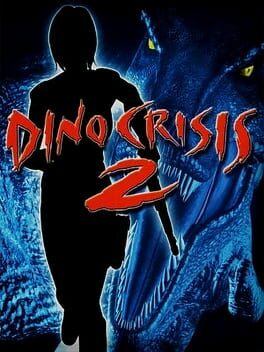
▲
1
▼
Capcom offered a demo CD based upon a beta build of the game as a pre-release promo. The entire build was on the disk, with a "time trial" style of gameplay lasting 45 minutes before exiting the game. A code was eventually worked out, utilizing a GameShark cheat device in order to disable the time trial demo's timer, enabling complete access to this earlier version. A list of notable differences compared to the retail release have been noted as a result, and Capcom would never release a time trial demo disc again.

▲
1
▼
 The unpatched release of Version 0.10 contains unused data for an event on Mars called "階段←↓". Re-enabling this event opens an alternate, invisible entrance to the Martian underground, to the left of the hole that leads to it in the final game; however, the map's collision data prevents Madotsuki from actually using it without the aid of further cheats.
The unpatched release of Version 0.10 contains unused data for an event on Mars called "階段←↓". Re-enabling this event opens an alternate, invisible entrance to the Martian underground, to the left of the hole that leads to it in the final game; however, the map's collision data prevents Madotsuki from actually using it without the aid of further cheats.Furthermore, the game contains unused graphics for a stairway that matches the visuals of the Martian surface, and the Martian underground features several flights of stairs at the beginning. This indicates that the underground was originally meant to be accessed via the unused stairway rather than needing Madotsuki to activate the Midget effect, with the summit's layout being changed concurrently with the altered entrance. The Yumesyuusei Patch and all releases based on it (including the official English release) remove the data for 階段←↓, though the unused stair tiles are unaffected.
Additionally, the game's code contains tiles for doors on the walls of the Martian underground, indicating that the sub-area was originally planned to feature multiple rooms rather than just one. This, combined with the unused alternate entrance, implies that Kikiyama had to leave Mars incomplete for unknown reasons, polishing up what was already completed late into Version 0.10's development.
The Cutting Room Floor articles:
https://tcrf.net/Yume_Nikki#Mars_Stairs
https://tcrf.net/Yume_Nikki/Unused_ChipSet_Graphics#Mars
https://tcrf.net/Yume_Nikki#Mars_Stairs
https://tcrf.net/Yume_Nikki/Unused_ChipSet_Graphics#Mars
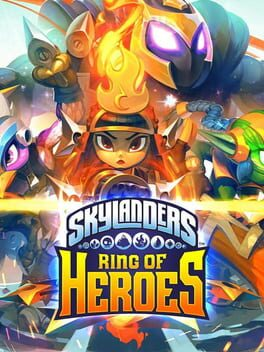
▲
1
▼
 Prior to the game's shutdown, several villains from across the Skylanders franchise were intended to be added to the game as enemies. These include:
Prior to the game's shutdown, several villains from across the Skylanders franchise were intended to be added to the game as enemies. These include:• Evil Glumshanks from Skylanders: Swap Force
• Super Kaos from Skylanders: Imaginators
• A version of Kaos wearing his Emperor outfit from Skylanders: SuperChargers
• Bobbin Rood, Olaf Crushersson, and Runys Pointyboots from the Nintendo 3DS version of Skylanders: Trap Team
• A Goliath Drow, likely meant to be Brock from Skylanders: Giants
• Malefor, the main antagonist of the The Legend of Spyro games
Had these plans gone through, it would have marked Malefor's first physical appearance in a Skylanders game, with his previous appearances being in the IDW comics, the spinoff TV series "Skylanders Academy", and as a Skystone in Skylanders: SuperChargers.
Unused enemies:
https://tcrf.net/Skylanders_Ring_of_Heroes/Planned_Content#Planned_Bosses
Skylanders Issue 7 (Malefor's IDW debut):
https://readallcomics.com/skylanders-007-2015/
Skylanders Academy - "Return to Cynder" (Malefor's TV series debut):
https://www.youtube.com/watch?v=flsDGMnDXF4
Skylanders: SuperChargers - Malefor Skystone:
https://www.youtube.com/watch?v=5-iU2H3BodY
https://tcrf.net/Skylanders_Ring_of_Heroes/Planned_Content#Planned_Bosses
Skylanders Issue 7 (Malefor's IDW debut):
https://readallcomics.com/skylanders-007-2015/
Skylanders Academy - "Return to Cynder" (Malefor's TV series debut):
https://www.youtube.com/watch?v=flsDGMnDXF4
Skylanders: SuperChargers - Malefor Skystone:
https://www.youtube.com/watch?v=5-iU2H3BodY

▲
1
▼
Within all available builds of the game are sprites for three possible effects that were never implemented. One set of sprites depicts Madotsuki blindfolded, another depicts a grayscale version of her similar to the "ghost" found in Mini Hell, and a third depicts 8-bit versions of the "crick in the neck," which in the final game is instead an event where Madotsuki randomly wakes up with her head stuck facing leftward. Of note is that Versions 0.07 to 0.09 additionally feature sprites for blindfolded and grayscale Madotsuki pinching herself awake; Version 0.10 overwrites them with the "active" sprites for the Spirit Headband effect.
Additionally, the game's data contains an unused mugshot depicting what appears to be an early iteration of the Spirit Headband effect, in which Madotsuki turns into a hitodama (a disembodied soul which appears as a floating ball of fire, comparable to a will-o'-the-wisp in many Western cultures) rather than becoming invisible. A full set of sprites for this version is also present in Version 0.04's data, showing that rather than turning invisible, pressing the 1 key would've simply changed the fire's color.
Additionally, the game's data contains an unused mugshot depicting what appears to be an early iteration of the Spirit Headband effect, in which Madotsuki turns into a hitodama (a disembodied soul which appears as a floating ball of fire, comparable to a will-o'-the-wisp in many Western cultures) rather than becoming invisible. A full set of sprites for this version is also present in Version 0.04's data, showing that rather than turning invisible, pressing the 1 key would've simply changed the fire's color.
The Cutting Room Floor articles:
https://tcrf.net/Yume_Nikki#Unused_Effect_Sprites
https://tcrf.net/Proto:Yume_Nikki/Version_0.04/Unused_Graphics#Effects
https://tcrf.net/Proto:Yume_Nikki/Version_0.07/Unused_Graphics#New_to_v0.07
https://tcrf.net/Proto:Yume_Nikki/Version_0.08/Unused_Graphics#Shared_with_v0.07
https://tcrf.net/Proto:Yume_Nikki/Version_0.09/Unused_Graphics#Shared_with_v0.08
https://tcrf.net/Proto:Yume_Nikki/Version_0.04/Unused_Graphics#Will-o.27-the-Wisp
https://tcrf.net/Yume_Nikki#Unused_Effect_Sprites
https://tcrf.net/Proto:Yume_Nikki/Version_0.04/Unused_Graphics#Effects
https://tcrf.net/Proto:Yume_Nikki/Version_0.07/Unused_Graphics#New_to_v0.07
https://tcrf.net/Proto:Yume_Nikki/Version_0.08/Unused_Graphics#Shared_with_v0.07
https://tcrf.net/Proto:Yume_Nikki/Version_0.09/Unused_Graphics#Shared_with_v0.08
https://tcrf.net/Proto:Yume_Nikki/Version_0.04/Unused_Graphics#Will-o.27-the-Wisp

▲
1
▼
 In all earlier builds of the game, Neon World featured a radically different layout, matching the open-world structure of the other "main" locations accessible from the Nexus. The sole relic of this in Version 0.10's segmented design is the room that Madotsuki starts in, which is much bigger and features a more spread-out tile pattern compared to the other rooms in Neon World.
In all earlier builds of the game, Neon World featured a radically different layout, matching the open-world structure of the other "main" locations accessible from the Nexus. The sole relic of this in Version 0.10's segmented design is the room that Madotsuki starts in, which is much bigger and features a more spread-out tile pattern compared to the other rooms in Neon World.One noteworthy casualty from the layout change is the removal of various head-like figures scattered across Neon World in Version 0.09. These figures are not seen anywhere in Version 0.10, making them the only documented "characters" that were outright removed (rather than relocated) in a later update.

▲
1
▼
 The game contains data for a second party member, despite the fact that Madotsuki is alone in standard gameplay. Using RPG Maker 2003's debugging tools to add this figure to Madotsuki's party shows that it does not have any sprites or even a name. However, various changes occur to the game's world, indicating that Kikiyama most likely used this for testing purposes:
The game contains data for a second party member, despite the fact that Madotsuki is alone in standard gameplay. Using RPG Maker 2003's debugging tools to add this figure to Madotsuki's party shows that it does not have any sprites or even a name. However, various changes occur to the game's world, indicating that Kikiyama most likely used this for testing purposes:• Almost all Toriningen are despawned; the only exceptions are the one in the Mall who changes the menu's palette when spoken to and the group throwing a party in the wilderness.
• The top-left cupboard in both versions of the Guillotine Room disappears. However, it can still be interacted with: pressing Z or Enter when standing where it normally would be transports Madotsuki to a random cupboard in the Number World, as if she had used one of the randomly generated exit cupboards. Returning to the Guillotine Room restores the top-left cupboard to its normal position.
• Movement is disabled upon waking up.
• The Witch's Flight event can be accessed by walking off the top-right corner of the Mall's rooftop, regardless of whether or not Madotsuki has the Witch effect equipped and active.
• An unused parallax background (named ネオン背景.xyz in the game's files) is enabled in Neon World, which normally has a solid black backdrop in Version 0.10 and all available early builds. This background, which depicts a series of ripples distorting a group of red, blue, and green lights, does not scroll correctly, only showing the top-left corner of it. Notably, this is the only unused background in the final game.
The notion that this invisible party member was used as a debugging tool is further bolstered by the presence of three similar extra party members (which also have no graphics or names) in Version 0.06. In that earlier build, Madotsuki is internally listed as the fourth party member; enabling the first one adds NASU to the game's debug map, though both that version and the one in Madotsuki's room will not progress past the title screen.

▲
1
▼
 In all recovered early builds of the game, the Fatten effect was provided by a funhouse mirror hidden in the large red maze (colloquially known as Hell). In Version 0.10, the mirror is removed and the effect is instead obtained by interacting with a tall, flashing humanoid (colloquially known as Strober) in the Docks B, and the portion of Hell where the mirror was once located is now empty. Incidentally, the Docks B is only accessible through Hell, preserving the association between the latter area and the effect.
In all recovered early builds of the game, the Fatten effect was provided by a funhouse mirror hidden in the large red maze (colloquially known as Hell). In Version 0.10, the mirror is removed and the effect is instead obtained by interacting with a tall, flashing humanoid (colloquially known as Strober) in the Docks B, and the portion of Hell where the mirror was once located is now empty. Incidentally, the Docks B is only accessible through Hell, preserving the association between the latter area and the effect.Despite the mirror being removed from the normal course of play in the final build, it is still present in a debug room hidden in the game's code, functioning as it did in earlier versions. However, in the official English release, the text that appears when interacting with it, "★ふとる★", is corrupted due to it not being translated.
The Cutting Room Floor articles:
https://tcrf.net/Proto:Yume_Nikki/Map_and_Event_Differences/Minor_Maps#Hell
https://tcrf.net/Yume_Nikki#Debug_Room
https://tcrf.net/Proto:Yume_Nikki/Map_and_Event_Differences/Minor_Maps#Hell
https://tcrf.net/Yume_Nikki#Debug_Room

▲
2
▼
 Within the files for the Version 0.04 build are cached thumbnails depicting screenshots from a cut soccer minigame called Severed Head PK, which, per its name, would've used severed heads as balls. Despite their small size, the thumbnails are legible enough to understand what they depict: one shows a title screen, one shows a player select screen, and one shows actual gameplay. Additionally, all three images feature a much cruder art style than either the main game or NASU, the minigame ultimately added in Version 0.05. Of note is that like Severed Head PK, NASU takes place in a green field beneath a black sky and prominently features bright red assets (hills, text, and the title logo in Severed Head PK; the player character, clouds, and a strobe effect in NASU).
Within the files for the Version 0.04 build are cached thumbnails depicting screenshots from a cut soccer minigame called Severed Head PK, which, per its name, would've used severed heads as balls. Despite their small size, the thumbnails are legible enough to understand what they depict: one shows a title screen, one shows a player select screen, and one shows actual gameplay. Additionally, all three images feature a much cruder art style than either the main game or NASU, the minigame ultimately added in Version 0.05. Of note is that like Severed Head PK, NASU takes place in a green field beneath a black sky and prominently features bright red assets (hills, text, and the title logo in Severed Head PK; the player character, clouds, and a strobe effect in NASU).Given that NASU is preceded by a game selection menu with only two options present – "NASU" and "Quit Game" (the latter of which simply closes the menu) – it is unknown if Kikiyama intended to reincorporate Severed Head PK as an additional option.
The Cutting Room Floor articles:
https://tcrf.net/Proto:Yume_Nikki/Version_0.04/Unused_Graphics
https://tcrf.net/Proto:Yume_Nikki/Map_and_Event_Differences/Main_Maps#Madotsuki.27s_Room
https://tcrf.net/Notes:Yume_Nikki#YumeNikkiREADME.txt
YouTube video showing the menu that precedes NASU:
https://www.youtube.com/watch?v=fm2yEF1yIWw
https://tcrf.net/Proto:Yume_Nikki/Version_0.04/Unused_Graphics
https://tcrf.net/Proto:Yume_Nikki/Map_and_Event_Differences/Main_Maps#Madotsuki.27s_Room
https://tcrf.net/Notes:Yume_Nikki#YumeNikkiREADME.txt
YouTube video showing the menu that precedes NASU:
https://www.youtube.com/watch?v=fm2yEF1yIWw

▲
3
▼
In the release build of Super Mario Maker, there were text strings relating to 13 unused Mystery Mushroom costumes:
• BabyMario
• BalloonFight
• EGadd
• GoldenRetri (presumably short for "golden retriever")
• MarioUs (presumably Mario's appearance from what is known in Japan as Super Mario Bros. USA)
• Mashiko (Japanese name of Mary O.)
• MrSaturn (from EarthBound)
• Muncher
• Nabbit
• Popo
• Tetris
• WindowsLogo
Baby Mario, Balloon Fighter, E. Gadd, Mary O., Mr. Saturn, and Nabbit would eventually be added in updates, as would an Ice Climbers costume featuring Popo alongside his friend Nana, while a power-up that turns Mario into his Super Mario Bros. 2 self would be introduced in an update to Super Mario Maker 2.
The most notable names are "Tetris" and "WindowsLogo", two non-Nintendo franchises that otherwise go unrepresented in Super Mario Maker. Tetris was formerly published on handheld and home consoles by Nintendo between the 1980s-1990s, and has been featured through music and Spirits in the Super Smash Bros. series, which is used as the basis for Super Mario Maker's base-game third party costume selection. WindowsLogo seems to be some kind of remnant of a Microsoft Windows operating environment being used to develop the game, as Nintendo has never been involved with the Windows line of software.
• BabyMario
• BalloonFight
• EGadd
• GoldenRetri (presumably short for "golden retriever")
• MarioUs (presumably Mario's appearance from what is known in Japan as Super Mario Bros. USA)
• Mashiko (Japanese name of Mary O.)
• MrSaturn (from EarthBound)
• Muncher
• Nabbit
• Popo
• Tetris
• WindowsLogo
Baby Mario, Balloon Fighter, E. Gadd, Mary O., Mr. Saturn, and Nabbit would eventually be added in updates, as would an Ice Climbers costume featuring Popo alongside his friend Nana, while a power-up that turns Mario into his Super Mario Bros. 2 self would be introduced in an update to Super Mario Maker 2.
The most notable names are "Tetris" and "WindowsLogo", two non-Nintendo franchises that otherwise go unrepresented in Super Mario Maker. Tetris was formerly published on handheld and home consoles by Nintendo between the 1980s-1990s, and has been featured through music and Spirits in the Super Smash Bros. series, which is used as the basis for Super Mario Maker's base-game third party costume selection. WindowsLogo seems to be some kind of remnant of a Microsoft Windows operating environment being used to develop the game, as Nintendo has never been involved with the Windows line of software.
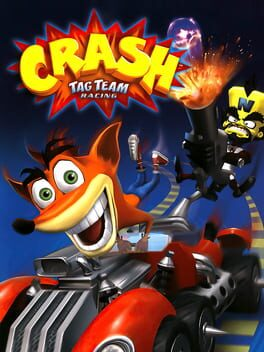
▲
1
▼
 The box arts of Japanese Crash Bandicoot localizations have historically used a redesign for Crash with larger eyes. This has been done for all games except for the "Titans" sub-series, which had its own distinct Crash design, and the Toys for Bob-developed games.
The box arts of Japanese Crash Bandicoot localizations have historically used a redesign for Crash with larger eyes. This has been done for all games except for the "Titans" sub-series, which had its own distinct Crash design, and the Toys for Bob-developed games.However, the only games that feature the design in-game for the Japanese localizations are the Japanese-developed Crash Boom Bang!, and Crash Tag Team Racing, which had a skin system that allowed Japanese Crash to appear abroad as well. A good chunk of Crash's costumes in Crash Tag Team Racing also got Japanese versions, though these combination costumes were not included in the Western release.
Explanation of box art changes:
https://www.youtube.com/watch?v=rbusKVM37Fw?t=68
Image gallery of assorted JP Crash design appearances:
https://crashbandicoot.fandom.com/wiki/Japanese_Crash
Localizations:
https://tcrf.net/Crash_Boom_Bang!
https://tcrf.net/Crash_Tag_Team_Racing#Japanese
https://www.youtube.com/watch?v=rbusKVM37Fw?t=68
Image gallery of assorted JP Crash design appearances:
https://crashbandicoot.fandom.com/wiki/Japanese_Crash
Localizations:
https://tcrf.net/Crash_Boom_Bang!
https://tcrf.net/Crash_Tag_Team_Racing#Japanese

▲
2
▼
 In the September 14, 2023 edition of the Undertale/Deltarune newsletter, Toby Fox revealed that a stealth sequence was planned for Chapter 3, only to be cut partway through development due to his dissatisfaction with it, stating that "a mechanic which basically just makes you move slower isn't necessarily fun." To compensate for the segment's removal, Fox included an MP3 file of the music that was composed for it, as the song would not be featured in the final game.
In the September 14, 2023 edition of the Undertale/Deltarune newsletter, Toby Fox revealed that a stealth sequence was planned for Chapter 3, only to be cut partway through development due to his dissatisfaction with it, stating that "a mechanic which basically just makes you move slower isn't necessarily fun." To compensate for the segment's removal, Fox included an MP3 file of the music that was composed for it, as the song would not be featured in the final game.

▲
1
▼
 When assets from Star Fox 2 were leaked in the 2020 Nintendo Gigaleak, one character that caught people's attention was what appeared to be a human woman. Some fans and news outlets assumed the character to be black based on her frilly hair and large lips, but palettes were eventually discovered that revealed her to be fair-skinned. The human woman's sprites have the same filename as Miyu and Fay's in the final game, and her two sprites' facial structures resemble Miyu and Fay's prototype sprites (the latter being a sheep instead of a poodle), suggesting she was simply a placeholder meant to give a human reference for Miyu and Fay's anthropomorphic expressions.
When assets from Star Fox 2 were leaked in the 2020 Nintendo Gigaleak, one character that caught people's attention was what appeared to be a human woman. Some fans and news outlets assumed the character to be black based on her frilly hair and large lips, but palettes were eventually discovered that revealed her to be fair-skinned. The human woman's sprites have the same filename as Miyu and Fay's in the final game, and her two sprites' facial structures resemble Miyu and Fay's prototype sprites (the latter being a sheep instead of a poodle), suggesting she was simply a placeholder meant to give a human reference for Miyu and Fay's anthropomorphic expressions.

